BMW has a problem with the M2, which arrives in SA in April: it’s a better, more engaging, more chuckable car than the bigger, more expensive M4.
Sure, it carries over a lot of the M3/M4 hardware beneath its shorter bodyshell, but it seems to turn them into something a lot more than the sum of its parts.
It’s enough to make the M2 seem like a bargain — and the more powerful M4 seem an extravagance.
Big engine-little car is a sure-fire bet for performance cars and few companies know this better than BMW’s M division. After all, stuffing small cars with semi-race stuff is how it came into being. It comes with inherent risk, though. Big engines can often overwhelm chassis and suspension architectures that prioritise volume. If the developers aren’t careful, the children of the breed can end up as one-trick ponies, lacking nuance and day-to-day charm.
That hasn’t happened here. The opposite of that has happened. BMW’s M operation has turned the M2 into something far more than the sum of its parts and developed a car that is, in most real-world areas, a better car than its big twin brothers, the M3 and M4.
That’s a big call, given the sheen that has historically coated the four and two-door thumpers, but it’s nonetheless accurate.
The M2 has turned into exactly what most enthusiasts wanted it to be, and what Audi’s quattro and Mercedes-Benz’s AMG hoped it wouldn’t be.
It is fast, sure, but even if a 4.3-second sprint to 100km/h isn’t something to sneeze at, straight-line speed isn’t entirely the point. It’s an M that isn’t about power. It could have been, of course. It could have just carried over the twin-turbo motor from the M3/M4 and run with it. But partly out of cost reasons, partly out of weight reasons (52% of the 1,495kg mass is already over the front axle) and partly to protect its more expensive brethren, the M2 uses a single, twin-scroll turbocharger to feed its 2,979cc in-line six.
No matter, it’s an impressive piece of work. Instead of using BMW’s latest in-line six as its platform, it uses the older N55, largely because that’s what the M3/M4 uses. There is plenty of power, with 272kW at 6,500r/min and it hits the rev limiter 300r/min later. It’s an engine that does well to hide the fact that it’s dominated by torque, which makes it almost infinitely flexible. It has an official peak of 465Nm at 1,400r/min and stays in a flat line from there to 5,560r/min, but it can punch out 500Nm for bursts of up to 30 seconds to fatten that up even more.
We played around with it, trying to find where it struggled for torque, and failed to find a hole. So strong is it that in the manual version, we pulled sixth gear from just 10km/h on a hill and it pulled away without a murmur or tremor. Sure, it didn’t hammer, but it got it done and started surging at about 2,000r/min. With first gear topping out around 60km/h, the M2 could realistically live with just two gears, then.
It is said to top out at 250km/h, but the Driver’s Package adds another 20km/h before the limiter arrives.
M boss Frank van Meel says the unlimited top speed is higher than that, but not much higher — maybe a shade under 280km/h in the right conditions.
The manual is a six-speed unit and while enthusiasts all love manuals, it’s clearly the inferior unit in the M2. It’s slower to 100km/h by 0.2 seconds, it uses more fuel and it has long gear-lever throws and a high clutch pick-up point. It does have a built-in heel-and toe throttle blipper on downshifts (in Sport and Sport+ modes), though, making even the ham-fisted seem like experienced racers.
The dual-clutch transmission is far, far more convincing. You might think its advantage would be that its two-pedal setup would make it easier around town (and it does), but its biggest advantage comes as you drive the M2 harder. And the M2 almost begs you to do that all the time.
On top of that ease of use, the dual-clutch shifts faster and smoother, blips more consistently on downshifts than the manual’s trick system and lets you push as hard as you like without ever moving your hands off the wheel. And it has even got a "Smokey Burnout Function", so that you can match it tyre smoke for tyre smoke with the manual versions.
That leaves the M2 with a tremendously strong powertrain, but it’s not just about torque. The car hammers hard, with relatively short gearing, and swings around willingly and cheerfully to its 7,000r/min cutout and feels like it could easily spin up another 1,000r/min higher than that.
The noise is there, too, though it lacks that classical metallic rasp of the best of M’s sixes of yore. There is depth in everything it says and it can be genuinely cranky, snapping between revs with a throttle response that feels sharp.
The powertrain is the easy part, though. It’s everything else that makes it special.
It’s visually more aggressive than anything else with this bodyshell. There are front wheel arches bulging out 55mm and the rears are pushed out 80mm. There’s a deep front splitter with unabashed air intakes cooling the radiators and brakes and a small spoiler on the bootlid.
It doesn’t go all out, like the M4. The roof is steel, not carbon-fibre, and so is the bootlid, which is partly why it weighs 1,495kg in manual form or 1,520kg with the dual-clutch. That’s only about 30kg lighter than the far larger M4, even though the wheelbase is 120mm shorter.
It doesn’t feel that heavy. It doesn’t feel anything like that heavy. It feels at least 200kg lighter. It’s so light on its feet that it could be dancing Swan Lake while the M4 is doing the Riverdance.
It starts with a perfect driving position and moves through to a steering system (the sportier of the two options) that delivers accurate feedback about the front end’s grip levels without causing too many tiring distractions. It’s a car that lets the driver feel instantly at home, instantly confident in the car’s ability to talk them through whatever is happening. And it does it brilliantly.
It’s so delicate and light on its feet, yet capable of punching as hard through some corners as the longer wheelbase M4.
There are tracks where the M2 could conceivably be quicker than the bigger M car, and Laguna Seca in California where we got to drive it is probably one of them. That’s because it bites so hard at the front end, delivering more and more confidence with every hard-driven corner, yet it doesn’t follow that up with the unsettled rear-end feel of a lot of pointy-feeling cars.
Grab it by the scruff of the neck and throw it at a bend, slow or fast, and the M2 just bites and bites at the front, with the custom-developed Michelin Pilot Super Sport rubber feeling like it will never let go. When it eventually does, its grip doesn’t just drop off a cliff and slide, but it runs out of grip progressively and it tells you at every slip how you should fix it.
The rear end is like that, too, but perhaps better. It follows the nose faithfully and the M4’s active differential lets the car punch out of corners with mechanical grip levels that are so high they just feel wrong on a car this size.
There is no one dominant part to the car’s handling package, either. It all comes together seamlessly and works in utter harmony. You can drive the car on mild understeer if that’s how you like it, or you can switch the skid-control systems off and flick the car into lurid tail slides, if that’s your preference.
And because it’s easy, don’t think it’s dull. It is just a car that’s full of joy, exquisitely developed and nearly perfectly coherent.
Locked away in the subframe is M’s active differential, which uses multiplate clutches to vary the locking between zero and 100% (which is about 2,500Nm of locking power), depending on the situation.
There are two different settings for the electric power steering system (for Comfort and Sport/Sport+). Four-piston fixed calipers will clamp the 380mm vented front discs, while two-piston units serve at the back.
The brilliant part is that it’s not just a track special. It works on the road, too, absorbing bumps with a supple, perfectly damped ride quality and keeping the rubber on the road as often as possible.
The fat torque gives it a breadth of use that’s rare in this day and age, letting the car cruise quietly and comfortably, even two gears too high, yet able to whip through corners as quickly as its more expensive siblings.
Inside, the M2 gives its sports seats adjustable side bolsters for the front occupants, plus a kneepad on the console for the driver.
It’s also just the thing for budding track day stars, with the GoPro app joining a suite of optional ConnectedDrive Services, while BMW’s lap timer app can overlap that with speed, longitudinal and lateral acceleration, the gear, the steering angle, the throttle position and the fuel consumption data at any given point.
Yet the interior is its biggest shortcoming, unable to push past the humble BMW beginnings to deliver a level of luxury or prestige worthy of the engineering underneath it. There are just too many areas of cheap plastic, too many exposed screw heads, too many clunky compartment-closing mechanisms.
But don’t doubt it, this is the car AMG and quattro GmbH feared it would be. And more.
-
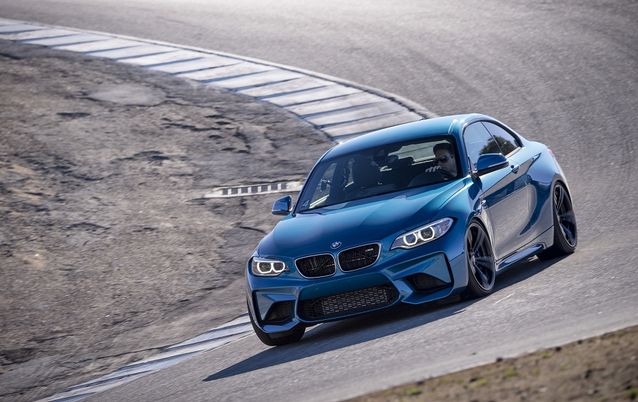
Laguna Seca provided a perfect opportunity to experience the talents of the new M2. Picture: BMW AG
-
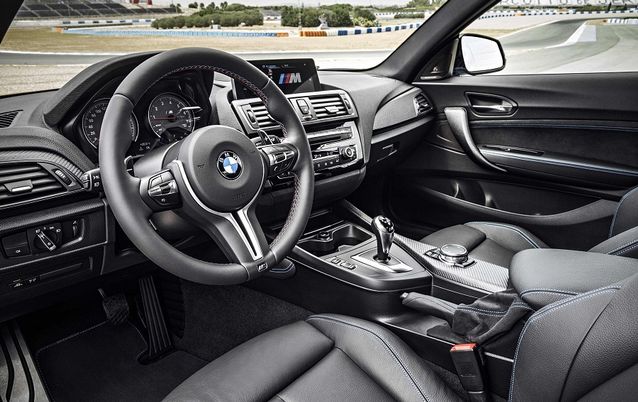
The interior is the biggest drawback. Picture: BMW AG
-
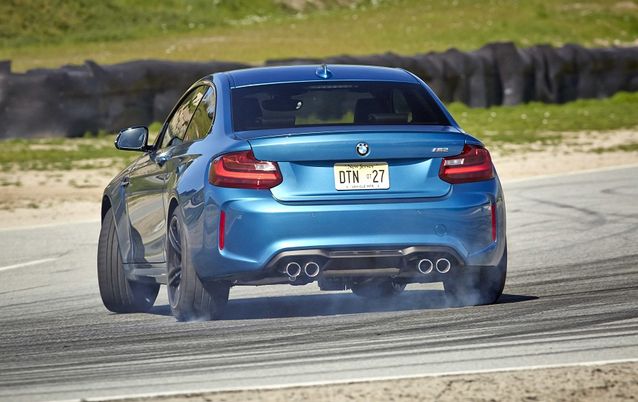
The M2 is happy to slide around in a controlled fashion and has a “Smokey Burnout Function” for those who like that sort of thing. Picture: BMW AG
-
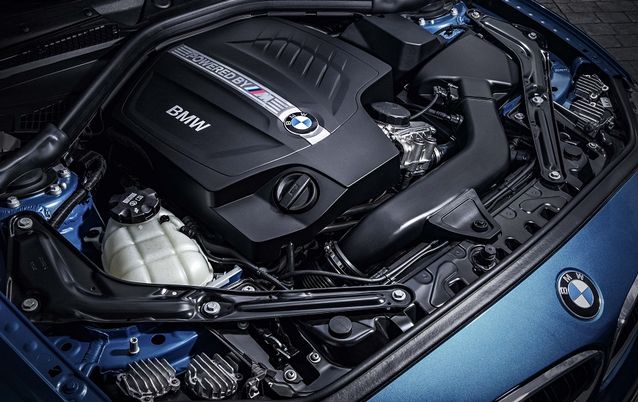
The in-line six engine develops 272kW and 465Nm. Picture: BMW AG
BMW has a problem with the M2, which arrives in SA in April: it’s a better, more engaging, more chuckable car than the bigger, more expensive M4.
Sure, it carries over a lot of the M3/M4 hardware beneath its shorter bodyshell, but it seems to turn them into something a lot more than the sum of its parts.
It’s enough to make the M2 seem like a bargain — and the more powerful M4 seem an extravagance.
Big engine-little car is a sure-fire bet for performance cars and few companies know this better than BMW’s M division. After all, stuffing small cars with semi-race stuff is how it came into being. It comes with inherent risk, though. Big engines can often overwhelm chassis and suspension architectures that prioritise volume. If the developers aren’t careful, the children of the breed can end up as one-trick ponies, lacking nuance and day-to-day charm.
That hasn’t happened here. The opposite of that has happened. BMW’s M operation has turned the M2 into something far more than the sum of its parts and developed a car that is, in most real-world areas, a better car than its big twin brothers, the M3 and M4.
That’s a big call, given the sheen that has historically coated the four and two-door thumpers, but it’s nonetheless accurate.
The M2 has turned into exactly what most enthusiasts wanted it to be, and what Audi’s quattro and Mercedes-Benz’s AMG hoped it wouldn’t be.
It is fast, sure, but even if a 4.3-second sprint to 100km/h isn’t something to sneeze at, straight-line speed isn’t entirely the point. It’s an M that isn’t about power. It could have been, of course. It could have just carried over the twin-turbo motor from the M3/M4 and run with it. But partly out of cost reasons, partly out of weight reasons (52% of the 1,495kg mass is already over the front axle) and partly to protect its more expensive brethren, the M2 uses a single, twin-scroll turbocharger to feed its 2,979cc in-line six.
No matter, it’s an impressive piece of work. Instead of using BMW’s latest in-line six as its platform, it uses the older N55, largely because that’s what the M3/M4 uses. There is plenty of power, with 272kW at 6,500r/min and it hits the rev limiter 300r/min later. It’s an engine that does well to hide the fact that it’s dominated by torque, which makes it almost infinitely flexible. It has an official peak of 465Nm at 1,400r/min and stays in a flat line from there to 5,560r/min, but it can punch out 500Nm for bursts of up to 30 seconds to fatten that up even more.
We played around with it, trying to find where it struggled for torque, and failed to find a hole. So strong is it that in the manual version, we pulled sixth gear from just 10km/h on a hill and it pulled away without a murmur or tremor. Sure, it didn’t hammer, but it got it done and started surging at about 2,000r/min. With first gear topping out around 60km/h, the M2 could realistically live with just two gears, then.
It is said to top out at 250km/h, but the Driver’s Package adds another 20km/h before the limiter arrives.
M boss Frank van Meel says the unlimited top speed is higher than that, but not much higher — maybe a shade under 280km/h in the right conditions.
The manual is a six-speed unit and while enthusiasts all love manuals, it’s clearly the inferior unit in the M2. It’s slower to 100km/h by 0.2 seconds, it uses more fuel and it has long gear-lever throws and a high clutch pick-up point. It does have a built-in heel-and toe throttle blipper on downshifts (in Sport and Sport+ modes), though, making even the ham-fisted seem like experienced racers.
The dual-clutch transmission is far, far more convincing. You might think its advantage would be that its two-pedal setup would make it easier around town (and it does), but its biggest advantage comes as you drive the M2 harder. And the M2 almost begs you to do that all the time.
On top of that ease of use, the dual-clutch shifts faster and smoother, blips more consistently on downshifts than the manual’s trick system and lets you push as hard as you like without ever moving your hands off the wheel. And it has even got a "Smokey Burnout Function", so that you can match it tyre smoke for tyre smoke with the manual versions.
That leaves the M2 with a tremendously strong powertrain, but it’s not just about torque. The car hammers hard, with relatively short gearing, and swings around willingly and cheerfully to its 7,000r/min cutout and feels like it could easily spin up another 1,000r/min higher than that.
The noise is there, too, though it lacks that classical metallic rasp of the best of M’s sixes of yore. There is depth in everything it says and it can be genuinely cranky, snapping between revs with a throttle response that feels sharp.
The powertrain is the easy part, though. It’s everything else that makes it special.
It’s visually more aggressive than anything else with this bodyshell. There are front wheel arches bulging out 55mm and the rears are pushed out 80mm. There’s a deep front splitter with unabashed air intakes cooling the radiators and brakes and a small spoiler on the bootlid.
It doesn’t go all out, like the M4. The roof is steel, not carbon-fibre, and so is the bootlid, which is partly why it weighs 1,495kg in manual form or 1,520kg with the dual-clutch. That’s only about 30kg lighter than the far larger M4, even though the wheelbase is 120mm shorter.
It doesn’t feel that heavy. It doesn’t feel anything like that heavy. It feels at least 200kg lighter. It’s so light on its feet that it could be dancing Swan Lake while the M4 is doing the Riverdance.
It starts with a perfect driving position and moves through to a steering system (the sportier of the two options) that delivers accurate feedback about the front end’s grip levels without causing too many tiring distractions. It’s a car that lets the driver feel instantly at home, instantly confident in the car’s ability to talk them through whatever is happening. And it does it brilliantly.
It’s so delicate and light on its feet, yet capable of punching as hard through some corners as the longer wheelbase M4.
There are tracks where the M2 could conceivably be quicker than the bigger M car, and Laguna Seca in California where we got to drive it is probably one of them. That’s because it bites so hard at the front end, delivering more and more confidence with every hard-driven corner, yet it doesn’t follow that up with the unsettled rear-end feel of a lot of pointy-feeling cars.
Grab it by the scruff of the neck and throw it at a bend, slow or fast, and the M2 just bites and bites at the front, with the custom-developed Michelin Pilot Super Sport rubber feeling like it will never let go. When it eventually does, its grip doesn’t just drop off a cliff and slide, but it runs out of grip progressively and it tells you at every slip how you should fix it.
The rear end is like that, too, but perhaps better. It follows the nose faithfully and the M4’s active differential lets the car punch out of corners with mechanical grip levels that are so high they just feel wrong on a car this size.
There is no one dominant part to the car’s handling package, either. It all comes together seamlessly and works in utter harmony. You can drive the car on mild understeer if that’s how you like it, or you can switch the skid-control systems off and flick the car into lurid tail slides, if that’s your preference.
And because it’s easy, don’t think it’s dull. It is just a car that’s full of joy, exquisitely developed and nearly perfectly coherent.
Locked away in the subframe is M’s active differential, which uses multiplate clutches to vary the locking between zero and 100% (which is about 2,500Nm of locking power), depending on the situation.
There are two different settings for the electric power steering system (for Comfort and Sport/Sport+). Four-piston fixed calipers will clamp the 380mm vented front discs, while two-piston units serve at the back.
The brilliant part is that it’s not just a track special. It works on the road, too, absorbing bumps with a supple, perfectly damped ride quality and keeping the rubber on the road as often as possible.
The fat torque gives it a breadth of use that’s rare in this day and age, letting the car cruise quietly and comfortably, even two gears too high, yet able to whip through corners as quickly as its more expensive siblings.
Inside, the M2 gives its sports seats adjustable side bolsters for the front occupants, plus a kneepad on the console for the driver.
It’s also just the thing for budding track day stars, with the GoPro app joining a suite of optional ConnectedDrive Services, while BMW’s lap timer app can overlap that with speed, longitudinal and lateral acceleration, the gear, the steering angle, the throttle position and the fuel consumption data at any given point.
Yet the interior is its biggest shortcoming, unable to push past the humble BMW beginnings to deliver a level of luxury or prestige worthy of the engineering underneath it. There are just too many areas of cheap plastic, too many exposed screw heads, too many clunky compartment-closing mechanisms.
But don’t doubt it, this is the car AMG and quattro GmbH feared it would be. And more.























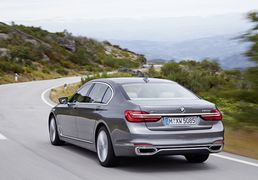

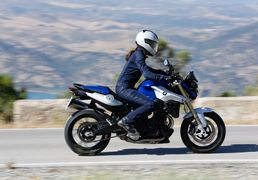
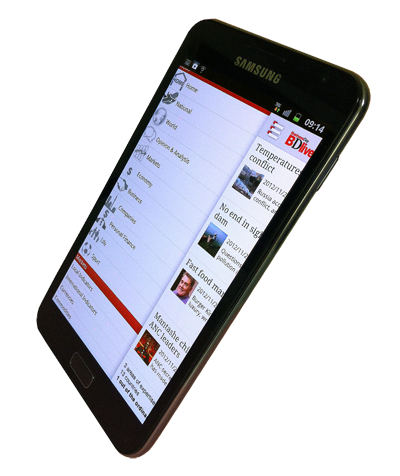




Change: 0.79%
Change: 0.68%
Change: 1.29%
Change: 0.34%
Change: 1.65%
Data supplied by Profile Data
Change: 1.38%
Change: -0.34%
Change: 0.79%
Change: 0.00%
Change: -0.19%
Data supplied by Profile Data
Change: 0.48%
Change: 0.06%
Change: 0.07%
Change: 0.78%
Change: 0.00%
Data supplied by Profile Data
Change: 0.29%
Change: 0.44%
Change: 0.20%
Change: 0.41%
Change: 1.45%
Data supplied by Profile Data